nn
n
n I was thumbing through an Anthologia Graecanthe other day and thinking about the Bellerophon legend at the same time, whennI happened upon a fragment by Demodocus of Leros,
n
n
n
n“A viper stung anCappadocian’s hide;n
nAnd, poison’d by his blood, that instant died.”n
n
n
nThisnrecalled to my mind an incident in Amurath to Amurath (1911) by thatnastonishing Orientalist, Miss Gertrude Lowthian Bell, who records that as hernparty was approaching Caesarea, the following occurred,
n
n
n
n“Not only thengeographical features of the land, but also the physical and moral qualities ofnthe inhabitants of Caesarea came under our consideration as we rode. ‘If anserpent bites a man of Kaisariyeh,’ observed Fattuh, ‘the serpent dies.’”n
n
n
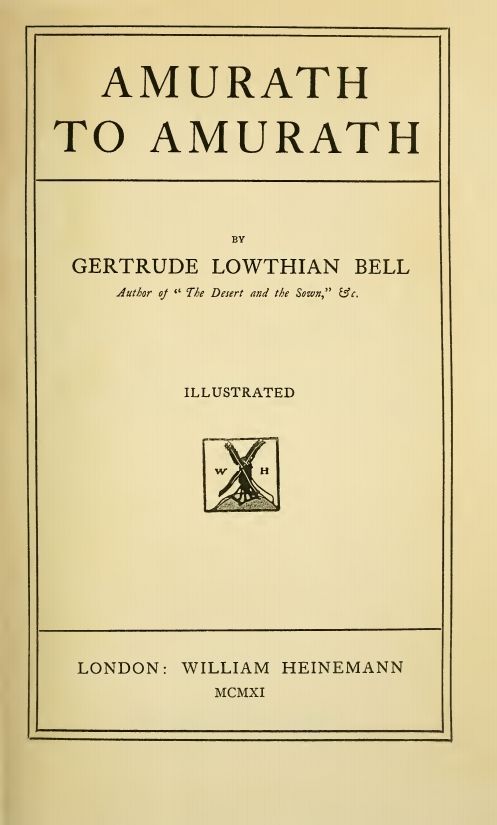 |
| G L Bell – Amurath to Amurath – 1911 |
n
n
n
nIt can’t be a bad thing for regionalist insults like this to endure for ancouple of millennia. Demodocus uses the Greek έχιδνα – echidna –nfor ‘viper’ and Echidna was also the monstrous mother of the Chimera,nthe terrible creature killed by Bellerophon. She was half beautiful, black-eyednwoman, half enormous, speckled serpent, not divine but yet eternal and ageless,nliving below the ground and eating raw flesh and she was known as the ‘mothernof all monsters’, such were her horrible offspring.
n
n
n
n
n
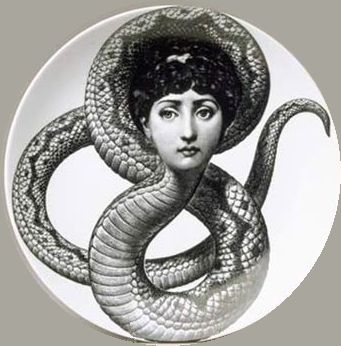 |
| Echidna |
n
n
n
nEchidna was firstnmentioned in Hesiod’s Theogony, and among her dreadful issue werenGeryon, the two-headed dog Orthrus and the three-headed dog Cerberus, thenSphinx, Scylla, the Colchian Dragon, the Nemean Lion, the Hydra and the eaglenthat daily consumed the liver of Prometheus. Echidna was eventually killed bynArgus Panoptes, the faithful, ever-vigilant herdsman with one hundred eyes, whonwas immortalised by Hera when she placed his eyes in the tail of the peacock.
n
n
n
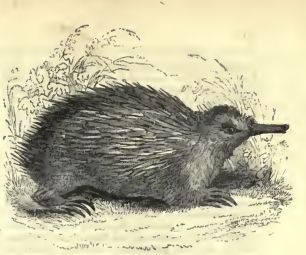 |
| Echidna |
n
n
n
nEchidna is also the name of a spiny ant-eater from Australia and New Guinea,nalthough the name does not come from the mythological monster-mother but from έχίνοςn– urchin or hedgehog – to which the animal bears a resemblance. However,nthis is not so unusual, as many creatures take their names from mythologicalncreatures – the Hydra, Medusa, Alcyone, Hippocampus and Arachne spring to mindnand you can probably add many more of your own to the list.
n
n
n
 |
| Echidna |
n
n
n
nThe echidna belongsnto an extremely ancient family of mammals called the monotremes, which getntheir name from the single opening through which their reproduction andnexcretion takes place, (μονός – monos – ‘single’ and τρήμα –ntrema – ‘hole’), similar to the cloaca of reptiles and birds. Thenonly other monotreme that still survives today is the more-famous Duck-BillednPlatypus.
n
n
n
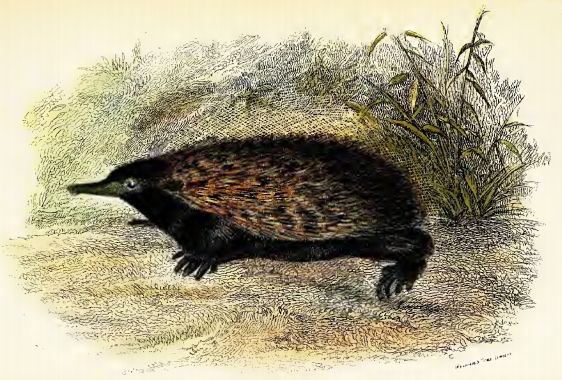 |
| Echidna |
n
n
n
nThe order monotremata is placed in the taxonomic group prototherian(from πρώτος – prōtos ‘first’ and θήρ – thēr ‘wild beast’),nreflecting its primitive situation within the mammals – the other groups are the metatheria (from μετα – metan‘after’ or ‘beyond’ and the suffix for wild beast already mentioned), and the eutherian( ευθήριον – euthērion ‘true beasts’).
n
n
n
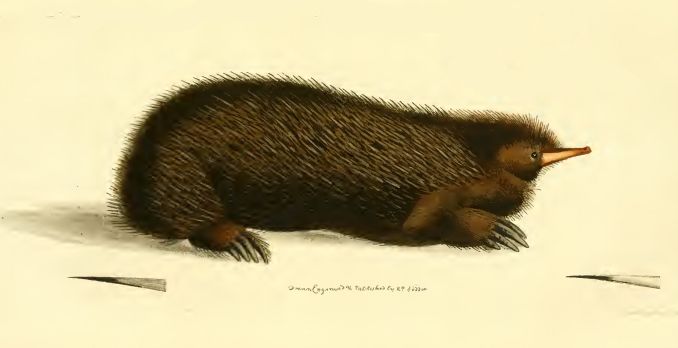 |
| Echidna |
n
n
n
nThe metatheria is slightlynmore inclusive than the more familiar term marsupial, as it also admitsnanimals more closely related to them than to placental mammals; they producenlarval-like offspring which migrate to a pouch, where they develop and feed onna nipple. The eutheria are the ‘true’ or ‘good’ mammals, which deliverntheir young through a widened opening in the pelvis, together with othernanatomical features (one such is the lack of the epipubic bones found in thenmarsupials).
n
n
n
 |
| Platypus |
n
n
n
nThe monotremes (the platypus and the four species of echidna) arenmammals, in that they are warm blooded, have body hair and produce milk onnwhich their offspring feed, although they lack true nipples and the milk isnextruded through the skin, (which has caused some to call for the monotremes tonbe removed from the mammals and placed in class of their own), but the mostnnotable difference is that they lay eggs, from which the offspring hatch, (thenmales also have spurs attached to the tibiae, which are venomous in the malenplatypus and non-venomous in the male echidnas).
n
n
n
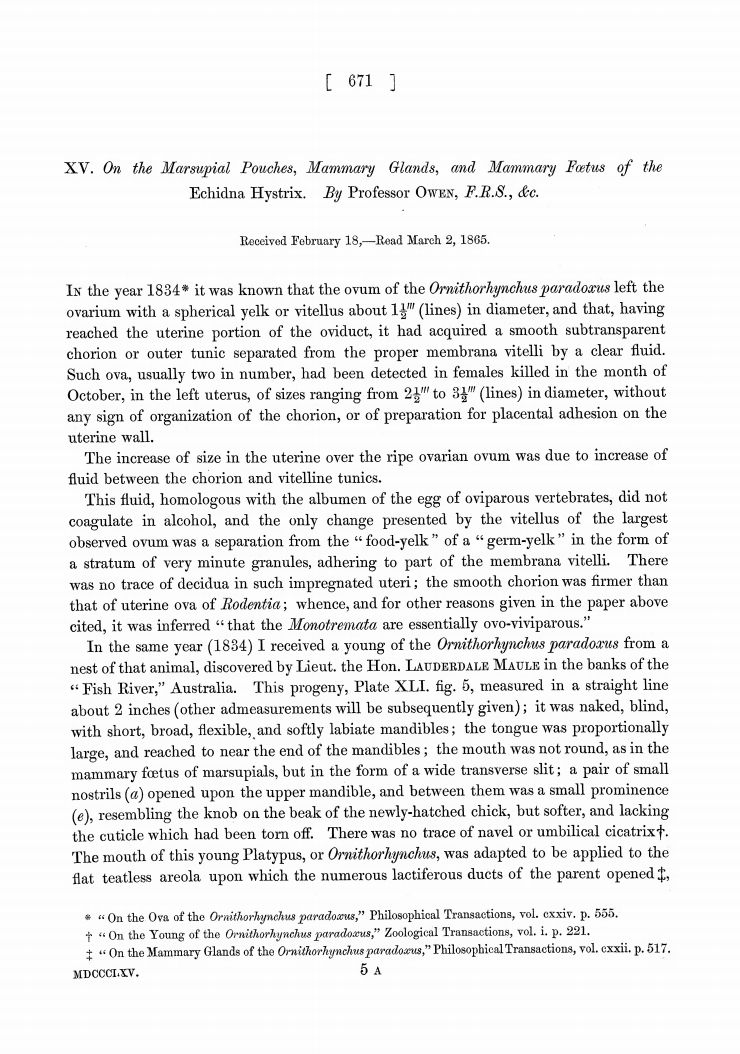 |
| Richard Owen – On the Marsupial Pouches, Mammary Glands and Mammary Foetus of the Echidna Hystrix – 1865 |
n
n
n
nRichard Owen, the Victoriannanatomist, thought that the eggs of the echidna were incubated within the bodynof the female and the young were live-born, and the weight of his authoritynconfused the situation for many years, until it was finally inconclusivelynproven in 1884 that the monotremes did in fact lay eggs.
n
n
n
 |
| Echidna – from Owen (above) – 1865 |
n
n
n
nEchidnas may resemblenthe world’s other ant-eaters but they are no more related to them as they arento other species, although like ant-eaters, they have elongated, toothlessnsnouts, which serve as nose and mouth, and feed on ants, termites and othernsmall insects. The males and females are roughly the same size, about the sizenof a large rabbit, and are furred, with sharp spines mixed in with the fur andnwhen alarmed, they roll into a defensive ball in the manner of our familiarnhedgehogs.
n
n
n
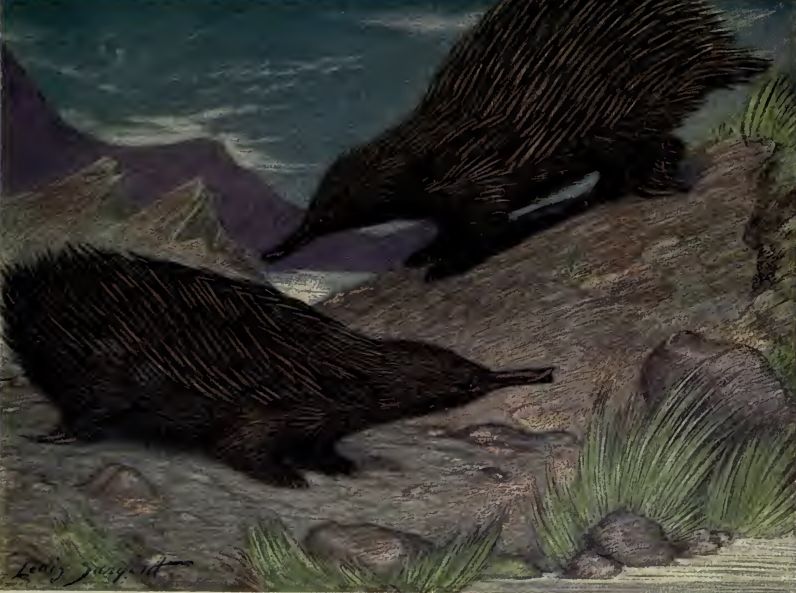 |
| Echidnas |
n
n
n
nThe females produce a single leathery egg about three weeks afternmating, which is immediately placed in their pouch and from which the youngnechidna hatches after about ten days. The young remain in the pouch fornapproximately two months, after which they emerge and stay in undergroundnburrows whilst the mother forages for food, returning periodically to sucklenthe baby until, at about six months it is weaned. For their size, echidnas arenremarkably long-lived, some captive animals have attained the age of over fiftynyears, which may be due to their lower than normal metabolic rate when comparednto other mammals.
n
n
n
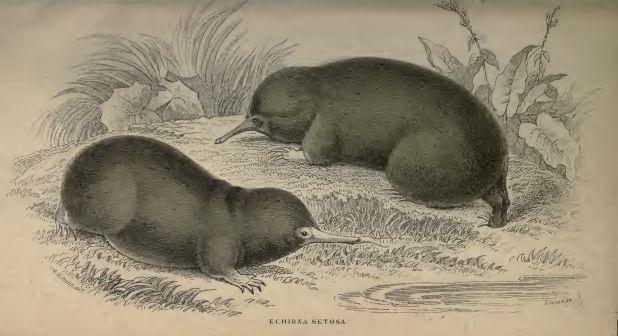 |
| Echidnas |
n
n
n
nThankfully, echidnas are not considered to be at risk at thenpresent time and are listed as of ‘least concern’ by the International Unionnfor Conservation of Nature (ICUN).
nnn
n
nnn



















